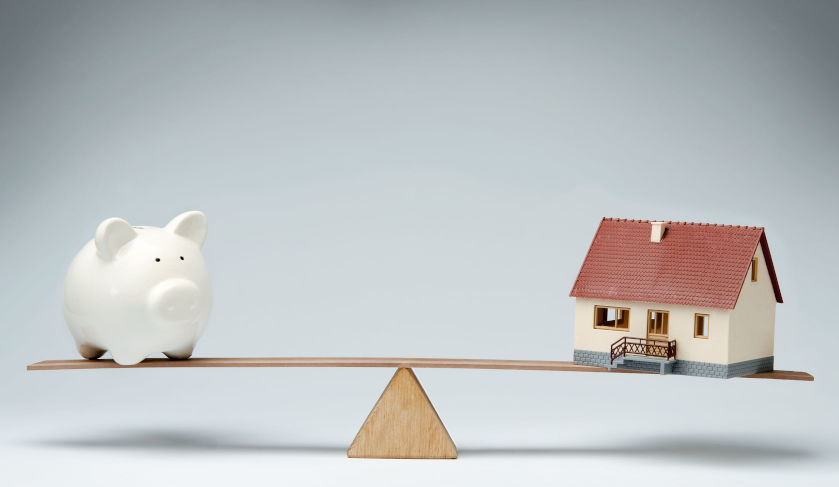Financial comfort stable but fragile, new data finds
Rising cost of necessities combined with weak income gains and the potential for mortgage rate rises are causing financial stress among households, according to ME’s latest Household Financial Comfort Report.

Despite ME’s overall household financial comfort index rising 2 per cent to 5.51 out of 10 in the six months to June 2017, the report shows a growing number of households expect their financial comfort to worsen. Future expectations have fallen for the third consecutive time, down 4 per cent over 18 months.
ME consulting economist and report co-author Jeff Oughton said that, on the surface, the financial comfort of the average Australian looks stable, but it’s fragile and susceptible to housing stress and energy shock costs.
“Overall financial comfort rose most notably due to 3 per cent rises in comfort with savings, income, and investments, reflecting some improvements in the labour market, rising house values and investments.
“But the cost of necessities remains the biggest concern for Australians, and when combined with stagnating or falling income for up to nearly 70 per cent of households, expected further rises in the cost of necessities like power prices, as well as rises in mortgage rates, the future doesn’t look as bright for some.”
The report highlights three areas of concern for Australian households:
1. Cost of necessities is the top worry
The report found that about half of Australians have no spare cash at the end of each month. As many as 51 per cent [or more] typically spend all their income. In the past 12 months, only 32 per cent reported higher incomes.
Of households whose financial situation worsened in the six months to June 2017, almost 40 per cent claimed the cost of necessities as the primary reason.
2. Forecast rate rises a concern
Nearly a third (31 per cent) of households expect to be worse off financially if the RBA raises the official cash rate by 1 per cent, including 47 per cent of those with a mortgage. Only 7 per cent with high comfort levels, typically high income and/or wealthy Australians, expect to be better off.
On average, mortgaged households are paying over a third of their post-tax income on their repayments, including 15 per cent paying more than a half and 48 per cent paying more than 30 per cent of their post-tax income.
“This will continue to be an important factor in household financial comfort, especially since the RBA has marked 3.5 per cent as the new norm for the neutral cash rate – well above the current actual cash rate,” Mr Oughton said.
The report also shows owner-occupier borrowers expect to be worse off than investors, 53 per cent against 35 per cent. Households that expect to be better off include those that own their home outright (38 per cent), earn over $100,000 (36 per cent) and retirees (32 per cent).
3. Income woes and underemployment
The proportion who felt they could "somewhat or very easily find a new job within two months if they became unemployed" increased from 37 per cent to 42 per cent.
Households with annual incomes over $200,000 recorded a double-digit rise in financial comfort, up 10 per cent to 7.85. Those earning under $40,000 saw no change and remained at 4.43.
“Six months ago, we saw a clear income divide emerging between the rich and poor, and in this report, this gap is exacerbated further,” Mr Oughton said.
The average Australian household, those earning between $75,000 and $100,000, is showing signs of subdued income growth, with 44 per cent seeing no change in their income during the past financial year.
“Underemployment is also feeding into household concerns and many employed persons are looking for more hours of work,” said Mr Oughton, adding that 27 per cent of casual and part-time workers said they were eager to increase the hours they work, and one in five wanted to change their status to full-time.
Other findings
Mortgage and rental repayments are causing a number of households financial distress. Almost 40 per cent of households currently renting or paying off a mortgage are worried about their ability to meet mortgage repayments or rent.
WA continues its recovery from lows of a year ago. Financial comfort in WA increased for the second consecutive time, rising 7 per cent to 5.43 out of 10 in the past 12 months, following record lows in June 2016 of 5.02 out of 10.
Financial comfort in South Australia fell to its lowest since June 2015, down 1 per cent in the past six months to 5.20. This is 6 per cent lower than Australia as a whole. The key drivers for this decline were comfort with investments (down 13 per cent), ability to maintain lifestyle for three months if their income was lost (down 4 per cent) and a 9 per cent decrease in comfort with their level of wealth.
